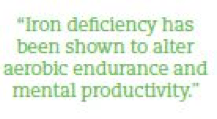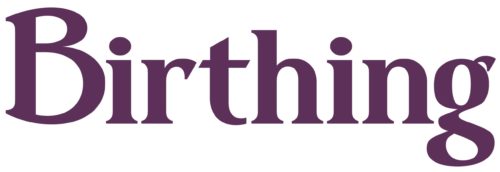Often we forget about the placenta when anticipating birth. the contractions announcing its arrival after birth sometimes come as a surprise. with the medicalization of birth it became rare for women to even see their placentas. now we are remembering the many uses for this extraordinary organ and the ways we can honour and celebrate it.
The placenta begins its journey at implantation, launching the beginning of a beautiful relationship. On a cellular level, it must provide for, sustain, and nurture its wee little one for approximately nine more months. It derives all of its nutrients, hormones, vitamins, minerals, blood, and oxygen from the mother. The placenta will begin to consume itself in times of starvation, dehydration, and poor oxygenation in order to sustain the fetus. In turn, when the mother nourishes herself through healthy eating, drinking, sleep, and exercise she provides an optimal setting for both the fetus and placenta during gestation. The placenta becomes rich in natural iron, B vitamins, and a variety of hormones all available for the use of the mother after birth. Remarkably, the majority of these extraordinary organs get taken to the incinerator every day.
The placenta has such an enormous influence on hormone production and regulation during pregnancy. In the last three months of pregnancy, the placenta secretes a great deal of CRH (corticotrophin-releasing hormone) into the blood stream. In fact, the maternal CRH level triples. This triggers the release of another hormone called cortisol. Cortisol is known as the “stress hormone.” It raises blood sugar levels and maintains normal blood pressure which helps us complete a task under stress. Researchers suggest the reason for this increase in CRH is the body preparing for labour and birth.1 Estrogen, progesterone, beta-endorphins, HCG, and cortisol levels also rise at a steady rate as the baby and placenta grow within the pregnant mother. At birth, levels decline dramatically. In 1995, researcher Dr. George Chrousos concluded that CRH levels are low in new mothers because the CRH from the placenta disrupts the feedback system that helps regulate normal hormonal production.
With hormone levels dropping due to the birth of the baby, placenta researchers speculate that postpartum mood disorders are a direct result of bio-chemical or hormonal changes.3 Postpartum depression (PPD) and other postpartum mood disorders can produce significant distress to a new mother and her family. They may also have an adverse impact on the cognitive and emotional development of the child. Hormonal fluctuations affect the mother physically, mentally, spiritually, as well as emotionally.
New mothers not only lose blood during childbirth but they also lose the placenta which is nine months of blood building material. The birth of the placenta accounts for 8.4% loss of maternal iron stores.4 This is a significant amount of blood loss in addition to the challenge of learning to meet the needs of a new baby, establishing the breastfeeding relationship and many sleepless nights. The cumulative stress can affect one’s state of mind.
Iron deficiency has been shown to alter aerobic capacity and endurance, as well as physical and mental productivity. It also depresses the immune system. Pregnancy, labour, birth and the postpartum period all place extra demands on a mother’s body which impact her body’s ability to make, have, and store enough iron. Lack of pre-natal iron supplementation also increases the risk of postpartum iron deficiency.

Becoming a new mother and the family adjustments that come with having a new baby can be quite stressful, overwhelming, and exhausting. New mothers who experience stress, fatigue, and are iron deficient after childbirth have a much higher rate of suffering from symptoms of postpartum depression. Mothers who have shown signs of stress and fatigue on day seven after childbirth have a significantly higher rate of great stress and exhaustion on day 14.6 By day 28, fatigue has become a direct predictor of a women’s risk of postpartum depression.
Placentophagy (consuming one’s placenta) can help bring a mother’s endocrine system back in balance. In a 1980 study, Blank and Friesen found that rat placenta contains orallyactive substances, which modify blood levels of pituitary and ovarian hormones.8 By modifying a mother’s hormone levels with her own placenta she can replenish what was lost as well as protect herself from symptoms of PPD.
Placenta Encapsulation is a useful process for mitigating the risk of PPD and for managing hormone imbalances in the postpartum period. It gives a flexible option for ingestion. Each capsule becomes a measurement tool for the amount needed for each specific individual. By replacing depleted hormones and building back a state of normalcy for the body and mind, placenta encapsulation supports a new mother’s emotional and physical recovery.
From a Traditional Chinese Medicine (TCM) perspective, some women are more prone to a blood deficient state due to
genetics, diet, work, stress, etc. We call this anemic/iron deficient in western medical terms. If the woman is more prone to blood deficiency she could experience headaches, weariness, fatigue, stress, lack of focus, and sometimes dizziness or fainting, as there is not enough blood her body.
For the treatment of a blood deficiency, a TCM doctor would prescribe herbal and nutritional therapy to build the blood as well as formulate a treatment of acupuncture points specific to that individual. TCM herbalists will prescribe new mothers herbs for postpartum that increase energy, build blood and nourish yin which in turn increases milk supply and strengthens the body physically as well as supporting the mind mentally and emotionally. There are many different formulae depending on
the individual and it is not uncommon to see bovine or sheep placenta in the list of ingredients. These are used due to their high iron content which helps treat fatigue and postpartum depression.
Women who have inadequate education in nutrition, lack iron supplementation (i.e.: placenta consumption), or are constitutionally blood/iron deficient are at increased risk for PPD. Placenta consumption should be discussed with every newly pregnant mama in order to effectively prevent iron deficiency, fatigue, stress, and relieve symptoms of postpartum depression.
If a mother decides to hire a Placenta Encapsulator she should know that there are two common methods of preparing her placenta for encapsulation and consumption. Her choice depends on her needs, beliefs, and/or opinions.
The most common technique is called the TCM Method.This preparation consists first of steaming the placenta with herbs and/or spices of the encapsulator’s choice and then dehydrating it for eight to ten hours. By steaming the placenta with herbs and spices the encapsulator is encouraging warmth and a deep dispersing effect once ingested.
The second preparation technique is called the Raw Method. It does not include steaming the placenta. No herbs or spices are used. The mother’s placenta is simply dried, ground and put into capsules, free of any allergens. If desired or required due to exposure to bacteria, an encapsulator may soak the placenta in vinegar or 100% grain alcohol in order to disinfect it. Steaming will also sterilize the placenta.
Both methods are effective. Personal preference, dietary concerns, or religious beliefs may come into play when deciding which method will work best for you. The placenta is an organ created by you and specifically designed by your body with your hormones. By supplementing with your placenta after childbirth, you give it the opportunity to replenish your body and mind with its essential essence.
Nicole Stevens is a Holistic Health Practitioner based in Calgary, Alberta.
1 Chrousos, 1995
2 Chrousos, 1995
3 Hendrick, Altshuler, & Suri, 1998
4 McCoy, Bleiler, & Ohlson, 2008
5 Bodnar, Cogswell, & McDonald, 2004
6 Bozoky, 2001
7 Corwin et al, 2004
8 Blank & Friesen, 1980
The Amazing Placenta
References:
Beard, J., et. al. ( 2005). Maternal iron deficiency anemia affects postpartum emotions and cognition. The Journal of Nutrition, 134: 267-272.
Blank, MS., Friesen, HG. (1980). Effects of placentophagy on serum prolactin and progesterone concentrations in rats after parturition or superovulation. Reprod Fertil, 60(20): 273-278.
Bodnar, L., et. al. (2005). Have we forgotten the significance of postpartum iron deficiency? American Journal of Obstetrics and Gynecology, 193, 36-44.
Bozoky, I., & Corwin, E. (2002). Fatigue as a predictor of postpartum depression. JOGNN Clinical Studies, 31(4); 436-443.
Chrousos, G. et al. (1995). Baby blues – postpartum depression attributed to low levels of corticotropin releasing hormone after placenta is gone; Discover; Dec 1995.
Corwin, E., Brownstead, J., Barton, N., Heckard, S., & Morin, K. (2005). The impact of fatigue on the development of ppd. JOGNN Clinical Research; 577-586.
DiPirro, J., & Kristal, M. (2004). Placenta for pain relief: Placenta ingestion by rats enhance y- and n-opioid antinociception, but suppresses A-opioid antinociception. Elsevier B. V., 1014, 22-33.
Hendrick, V., Altshuler, L., & Suri, R. (1998). Hormonal changes in the postpartum and implications for ppd. The Academy of Psychosomatic Medicine, 39(2), 93-101.
Kristal, M. (1980). Placentophagia: A behavioural enigma. Neurosci. Biobehav, Rev. 4(2) 141-150.
Kristal, M. (1991). Enhancement of opioid-mediated analgesia: A solution to the enigma of placentophagia. Neurosci Biobehav, Rev 15(3); 425-435.
Kristal, M. (2008) Participation of placental opioid-enhancing factor in opioid-modulated events at parturition. Neurosci Biobehav; 1-9.
McCoy, B., Bleiler, R., Ohlson, M. (1961). Iron content of intact placenta and cords. The Amercian Journal of Clinical Nutrition, 9; 613-615.
Shapiro, J., & Wingeier, K. http://placentalove.blogspot.com
Soykova-Pachnerova, E., et. al. (1954). Placenta as a lactogogon. Gynaecologia, 138(6):617-627.
Verdon, F., et. al. (2003). Iron supplementation for unexplained fatigue in non-anaemic women: Double blind randomised placebo controlled trial. BMJ: 1-7.
(2010). http://www.placentanetwork.com/remedies/Placenta-Encapsulation.asp

